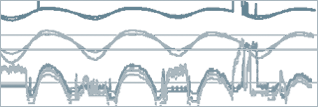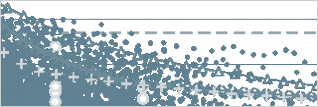
Modelling of the dispersion of effluent plumes, and of organic particulates, is frequently needed to support the consenting of marine discharges. Modelling may involve simple empirical systems, such as the prediction of plume initial dilution below, or more complex systems. The simplest approach to prediction of initial dilution is the use of empirical equations describing the variation of dilution with discharge rate,water depth, ambient current velocity and density. Example 1 describes variation in predicted dilution at alternative outfall locations throughout spring and neap tidal ranges. AMSL has particular expertise with two more sophisticated modelling systems: CORMIX CORMIX predicts both the qualitative features (e.g. flow classification) and the quantitative aspects (e.g. dilution ratio, plume trajectory) of the hydrodynamic mixing processes resulting from different discharge configurations and in a range of ambient water bodies. BenOss BenOss consists of four main modules: grid generation, particle tracking, resuspension and carbon degradation and a benthic module which predicts changes in benthic community structure. Example 2 shows CORMIX predictions of soluble copper concentration in a distillery effluent plume, compared with concentrations estimated from dye dispersion studies (blue symbols) and directly measured in the field (pink symbols). Example
3 shows CORMIX predicted dilution from a surface discharge, validated
against an envelope of in-situ fluorometry dye |
 |
 |
|
 |
|||
 |
|||
 |
|||
 |
|||
 |
|||